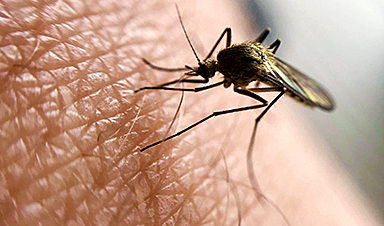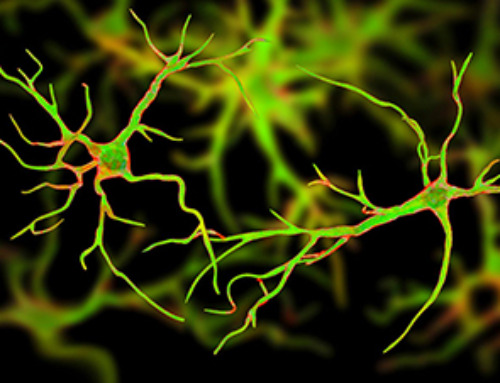The American South has been under constant duress from extreme weather events spurred by rising global temperatures, but the region could face a different kind of threat that it hasn’t experienced in over a century: yellow fever.
What’s happening?
A joint report from the Baylor College of Medicine and the Stanford School of Medicine published in the New England Journal of Medicine warned that warmer climates, urbanization, and “shifting patterns of human migration” are increasing the likelihood of a rapid spread of mosquito-borne infections in the States.
It noted that “extreme poverty throughout Texas and the Gulf Coast states, where inadequate or low-quality housing, absent or broken window screens, and a pervasive dumping of tires in poor neighborhoods” can become breeding sites for mosquitoes, make the South particularly vulnerable.
“We’ve seen a rise in mosquito-transmitted illnesses in Texas and Florida, including malaria, dengue, chikungunya and Zika virus, but now we’re also worried about yellow fever since it seems to be accelerating in tropical regions of Latin America such as Brazil and Venezuela,” Dr. Peter Hotez, professor and dean of Baylor College of Medicine and co-author of the paper, said in a statement.
Why is the return of yellow fever concerning?
According to the WHO, common symptoms of yellow fever include fever, headaches, muscle pain, nausea, vomiting, and fatigue. It can affect the liver and kidneys in severe cases and cause jaundice, the yellowing of skin, from which the virus gets its name.
While yellow fever falls under the same classifications as dengue and Zika virus, it has a higher mortality rate, killing approximately half of the afflicted patients within seven to 10 days after they enter the toxic phase.
Yellow fever’s potential return to prominence underscores the ripple effects of a warming planet. Rising temperatures have allowed mosquitoes to migrate to newer environments while lengthening the season in which the insects are active.
“One of the reasons we established National School of Tropical Medicine at Baylor was in recognition that tropical infections have become a new normal due to a confluence of climate change, urbanization and poverty on the U.S. Gulf Coast and Texas,” Dr. Hotez added.
What is being done about the potential threat of yellow fever?
The researchers called for mosquito control through the development of antiviral drugs, vaccines, and genetic engineering to permanently alter mosquito genes.
“The mosquitoes that spread yellow fever are here in the U.S. and conditions are increasingly favorable for them as our world warms,” said Dr. Desiree LaBeaud, professor of pediatrics-infectious disease at Stanford School of Medicine and publication co-author. “We need a comprehensive plan to better protect at-risk communities in the southern U.S. from mosquito-borne diseases.”
In the meantime, individuals can prepare by taking a single-dose yellow fever vaccine that has been available for over eight decades or using pesticide-free measures to either repel mosquitoes or prevent their reproduction.
News
New skin-permeable polymer delivers insulin without needles
A breakthrough zwitterionic polymer slips through the skin’s toughest barriers, carrying insulin deep into tissue and normalizing blood sugar, offering patients a painless alternative to daily injections. A recent study published in the journal Nature examines [...]
Multifunctional Nanogels: A Breakthrough in Antibacterial Strategies
Antibiotic resistance is a growing concern - from human health to crop survival. A new study successfully uses nanogels to target and almost entirely inhibit the bacteria P. Aeruginosa. Recently published in Angewandte Chemie, the study [...]
Nanoflowers rejuvenate old and damaged human cells by replacing their mitochondria
Biomedical researchers at Texas A&M University may have discovered a way to stop or even reverse the decline of cellular energy production—a finding that could have revolutionary effects across medicine. Dr. Akhilesh K. Gaharwar [...]
The Stunning New Push to Protect the Invisible 99% of Life
Scientists worldwide have joined forces to build the first-ever roadmap for conserving Earth’s vast invisible majority—microbes. Their new IUCN Specialist Group reframes conservation by elevating microbial life to the same urgency as plants and [...]
Scientists Find a Way to Help the Brain Clear Alzheimer’s Plaques Naturally
Scientists have discovered that the brain may have a built-in way to fight Alzheimer’s. By activating a protein called Sox9, researchers were able to switch on star-shaped brain cells known as astrocytes and turn them into [...]
Vision can be rebooted in adults with amblyopia, study suggests
Temporarily anesthetizing the retina briefly reverts the activity of the visual system to that observed in early development and enables growth of responses to the amblyopic eye, new research shows. In the common vision [...]
Ultrasound-activated Nanoparticles Kill Liver Cancer and Activate Immune System
A new ultrasound-guided nanotherapy wipes out liver tumors while training the immune system to keep them from coming back. The study, published in Nano Today, introduces a biodegradable nanoparticle system that combines sonodynamic therapy and cell [...]
Magnetic nanoparticles that successfully navigate complex blood vessels may be ready for clinical trials
Every year, 12 million people worldwide suffer a stroke; many die or are permanently impaired. Currently, drugs are administered to dissolve the thrombus that blocks the blood vessel. These drugs spread throughout the entire [...]
Reviving Exhausted T Cells Sparks Powerful Cancer Tumor Elimination
Scientists have discovered how tumors secretly drain the energy from T cells—the immune system’s main cancer fighters—and how blocking that process can bring them back to life. The team found that cancer cells use [...]
Very low LDL-cholesterol correlates to fewer heart problems after stroke
Brigham and Women's Hospital's TIMI Study Group reports that in patients with prior ischemic stroke, very low achieved LDL-cholesterol correlated with fewer major adverse cardiovascular events and fewer recurrent strokes, without an apparent increase [...]
“Great Unified Microscope” Reveals Hidden Micro and Nano Worlds Inside Living Cells
University of Tokyo researchers have created a powerful new microscope that captures both forward- and back-scattered light at once, letting scientists see everything from large cell structures to tiny nanoscale particles in a single shot. Researchers [...]
Breakthrough Alzheimer’s Drug Has a Hidden Problem
Researchers in Japan found that although the Alzheimer’s drug lecanemab successfully removes amyloid plaques from the brain, it does not restore the brain’s waste-clearing system within the first few months of treatment. The study suggests that [...]
Concerning New Research Reveals Colon Cancer Is Skyrocketing in Adults Under 50
Colorectal cancer is striking younger adults at alarming rates, driven by lifestyle and genetic factors. Colorectal cancer (CRC) develops when abnormal cells grow uncontrollably in the colon or rectum, forming tumors that can eventually [...]
Scientists Discover a Natural, Non-Addictive Way To Block Pain That Could Replace Opioids
Scientists have discovered that the body can naturally dull pain through its own localized “benzodiazepine-like” peptides. A groundbreaking study led by a University of Leeds scientist has unveiled new insights into how the body manages pain, [...]
GLP-1 Drugs Like Ozempic Work, but New Research Reveals a Major Catch
Three new Cochrane reviews find evidence that GLP-1 drugs lead to clinically meaningful weight loss, though industry-funded studies raise concerns. Three new reviews from Cochrane have found that GLP-1 medications can lead to significant [...]
How a Palm-Sized Laser Could Change Medicine and Manufacturing
Researchers have developed an innovative and versatile system designed for a new generation of short-pulse lasers. Lasers that produce extremely short bursts of light are known for their remarkable precision, making them indispensable tools [...]





















